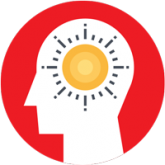Article

Clonidine: Off-label uses in pediatric patients
- Author:
- Jordan Hill, BS
- Musa Yilanli, MD
Clonidine is a centrally acting alpha-2 agonist originally developed for treating hypertension.
Article

5 Strategies for managing antipsychotic-induced hyperprolactinemia
- Author:
- Musa Yilanli, MD
The relationship between antipsychotic treatment and hyperprolactinemia is well established.
